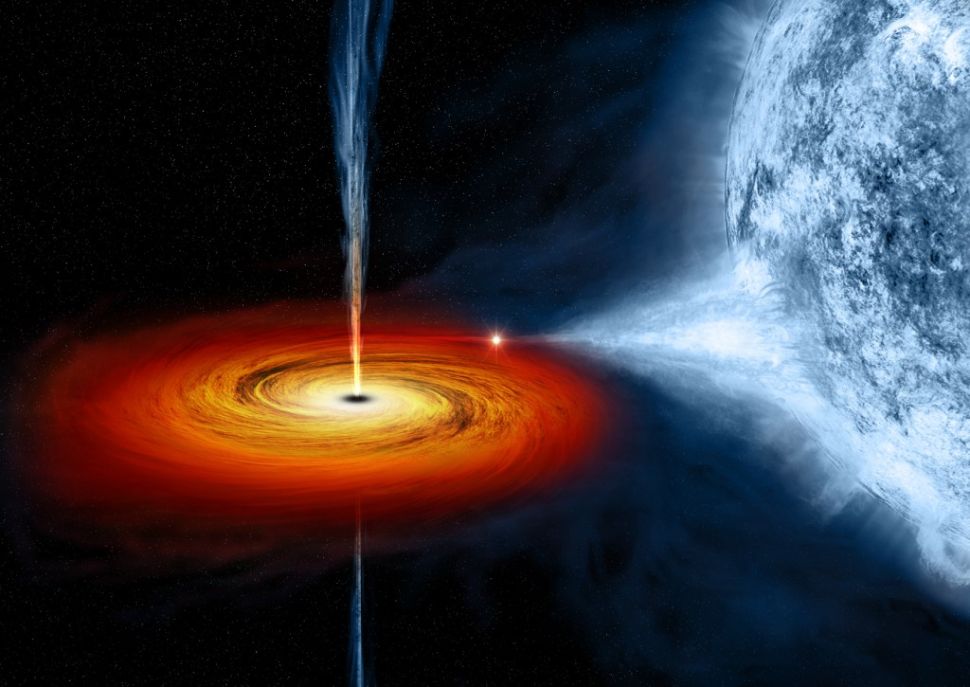Monitoring Observations Of SMC X-1's Excursions
 Monitoring Observations Of SMC X-1's Excursions (MOOSE) is a program designed to study the X-ray fluctuations of SMC X-1, an accreting neutron star system similar to the artist's rendition on the right (NASA/CXC/M.Weiss), as it undergoes super-orbital period variability.
Monitoring Observations Of SMC X-1's Excursions (MOOSE) is a program designed to study the X-ray fluctuations of SMC X-1, an accreting neutron star system similar to the artist's rendition on the right (NASA/CXC/M.Weiss), as it undergoes super-orbital period variability.
Previously, researchers observed three epochs of super-orbital period variability in SMC X-1, but they have never probed the physical properties of the accretion disc, nor its shape. During the fourth observed epoch from 2020-21, MOOSE performed X-ray spectroscopic and time-domain monitoring with the Neutron Star Interior Composition Explorer Mission (NICER), an X-ray telescope mounted on the International Space Station.
With continued X-ray monitoring, MOOSE will help shed a light on the physical mechanism behind SMC X-1's superorbital periodicities and its changes in accretion disc shape.
Background and Scientific Context
SMC X-1 is not a single object but rather a system consisting of an accreting neutron star X-ray binary which is also a pulsar. A neutron star accretes when it pulls matter from a nearby “donor” star in a binary system into a thick disk of orbiting material. The particles in an accretion disk then lose energy due to viscous friction and fall to the centre onto a compact object (in this case, the neutron star) where they release energy as X-ray radiation.
In addition to the X-ray radiation from an accretion disc, we can also see X-ray pulses from the neutron star itself. Since neutron stars are highly magnetized at the poles, they collect matter onto the poles, which release radiation in beams. Since SMC X-1 also spins at a rate of ~0.7 rotations per second, the beamed radiation from the poles mimics that of a lighthouse causing the pulsations we see.

SMC X-1 is an unusual system because it has three periods describing its orbital dynamics: we know its pulse period and binary orbital period (3.89 days for the neutron star and donor star to orbit each other) as well the mysterious “super-orbital” period, our observational proxy for the warp of the accretion disc, which ranges from 40-60 days.
Unlike super-orbital periods in other systems, in SMC X-1 the super-orbital period undergoes excursions, meaning the duration of the period decreases from a 60 day period to a 40 day period over a span of 3 years. There are a few hypotheses about why this happens, but one of the leading explanations is radiation-driven warping — meaning the beam from the pulsar irradiates the accretion disc, causing it to change shape. Although compelling from a theoretical standpoint, this mechanism has never definitively verified observationally. The MOOSE data-set is designed to provide the observational tools necessary to explore or rule out this theory.
You can learn more about our results and team, as well as NICER .
Authors: Kristen Dage, Eleanor LaPrade, Hannah Fronenberg
